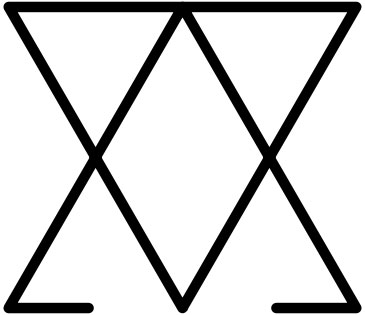Arsenic is a highly toxic metalloid currently present in pesticides, insecticides, and herbicides. Its association with mortality and death has been perpetuated by its historic use as a murder weapon, but in ancient alchemical rituals, arsenic was used for both medicinal and magical cures as well as to bring about a trance-like state for enlightenment purposes.
Widely used by early alchemists, arsenic derives its name from Aramaic word Zarniqa and Zarnikh, which meant ‘yellow’ in Persian. A swan often symbolizes the element, which comes in shades of gray, yellow, and black.
The choice of symbol arises from the opinion that arsenic was not only a poison but also a substance ‘evolving’ between alchemical stages the way a duckling transforms into a swan. It is found in several ancient alchemical recipes: the Physika et Mystika (the earliest known text on alchemy) recommends that arsenic is used to whiten copper.
In the 13th century, alchemist Albertus Magnus produced the first instance of metallic arsenic. The alchemic symbols for the substance were soon changed to reflect its toxic aspects, but thanks to its transformation effects, arsenic continues to be represented by a swan in the alchemists’ world of symbols.

» Amulet
» Ajna
» Arsenic
» Merkaba
» Hung
» Yin Yang
» bindi
» IK Onkar
» Khanda
» Halo
» jiahu
» Tau
» Uraeus
» Menorah
» Quincunx
» Tilaka
» Taijitu
» Vajra
» Chai
» Chi Rho
» Bagua
» Dragon
» Hunab Ku
» Caduceus
» Infinity
» Ichthus
» Hedjet
» Lauburu
» Om
» Ankh
» Chalice
» Pentacle
» Maat
» Ogham
» Mandala
» Kartika
» Khamsa
» Heart
» Labrys
» Sun Face
» Raven
» Triskele
» Scarab
» Dove
» Hanukia
» Anubis
» Trishula
» Durga
» Mezuzah
» Bay Tree
» Geruda
» Kinnara
» Quito
» Condor
» Blue Jay
» Falcon
» Makara
» Rosary
» Uluru
» Apsaras
» Hanuman
» Serpent
» Minotaur
» Mercury
» Apex
» Vestra
» Yoni
» Astarte
» dakini
» Calabash
» Mandrake
» Rebis
» Typhon
» Vegvísir
